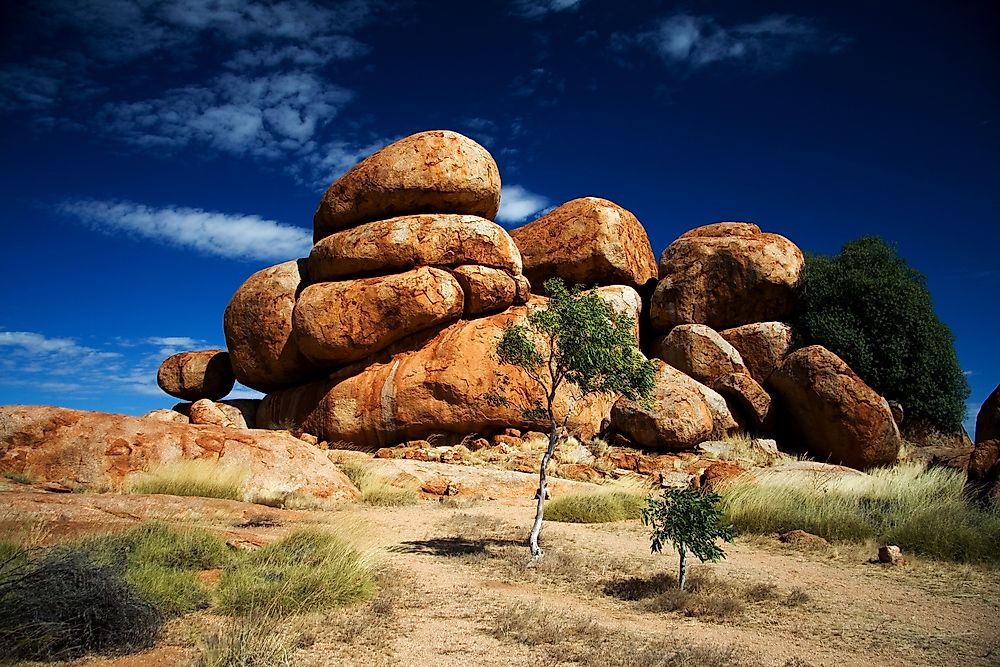What Is The Devil’s Marbles Conservation Reserve?

Description
The Devil’s Marble Conservation Reserve is also known as Karlu Karlu (in the language of the local Warumungu Aboriginals) which roughly translates to “boulders that are round.” The protected reserve area is situated in an isolated region of Australia far from settlements. More specifically, Karlu Karlu is situated around 65 miles to the south of Tennant Creek, which is in turn located in the Northern Territory of Australia. Alice Springs is around 244 miles from the protected reserve while Wauchope, the nearest human settlement, is around 5.6 miles south of the site. Katherine is around 473 miles to the North of Karlu Karlu.
The rocks are huge and round and have varying diameters ranging from 1.5 feet to 17 feet. Some of the rocks sit on top of each other in ways that appear impossible. The unnatural balancing and their reddish hues could be the reason why the local Aboriginals made the site an important religious site. In fact, the marbles are one of the world’s oldest traditional religious features.
Habitat
One may think that since the rocks are in the middle of nowhere in the Australian outback, there is no life. On the contrary, the rocks form the perfect habitat for some flora and fauna. Some of the plants and animals include the native rock figs, pygmy spiny-tailed goanna, fairy martins, and others.
Uniqueness
While the fact that these huge reddish boulders of varying sizes are unique in and of themselves, there is even more to these rocks. As stated earlier, they are one of the oldest religious sites on the globe. Furthermore, no two boulders are the same. One could walk around the rock and still be surprised by a new view or the way some of them are precariously balanced.
Tourism
Being one of the oldest religious reserves in the world, the area is expectedly popular. The site is open to visitors throughout the year and is easily accessible due to the plenty of signs around that guide people. The area experiences cooler climates between the months of May and August. This cooler period provides the perfect opportunity for visitors to a site whose popularity is steadily increasing. For example, data from 2007 shows that the site had 96,172 visitors. This number increased vastly in 2012 when 137,500 visitors were recorded to have visited. A camping area is also available for camping enthusiasts.
Threats
Naturally, the area has few threats since it is practically in the middle of nowhere. However, human beings present a unique external threat. The protection afforded to the site is partly due to its significance to the local tribes. However, human beings have interfered with the site. For example, in 1953, a huge rock was moved in order to be placed on top of John Flynn’s burial place. In 1980, a similar incident occurred. Both times, the movement caused outrage from the locals which ultimately led to the death of one leader in 1981. Eventually, the rocks were returned, but the damage had been done. Whether people will interfere in future remains to be seen.











